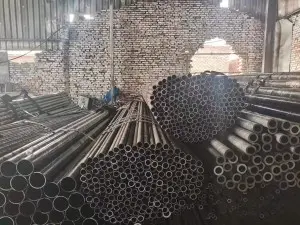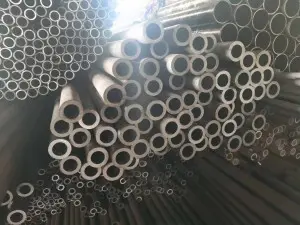Hydraulic tubes play a vital role in various industries, providing a means of transmitting fluid power efficiently and reliably. Whether it's in heavy machinery, automotive systems, or industrial applications, hydraulic tubes are essential components for powering hydraulic equipment.
Understanding Hydraulic Tubes
Hydraulic tubes, also known as hydraulic pipes or hydraulic lines, are specially designed pipes used to convey hydraulic fluid from one component to another in a hydraulic system. They are built to withstand high-pressure environments and transmit fluid power without leakage. Hydraulic tubes are typically made from steel, stainless steel, or other non-ferrous materials due to their durability and resistance to corrosion.


Types of Hydraulic Tubes
a) Seamless Tubes: Seamless hydraulic tubes are manufactured from solid cylindrical billets without any welding or seams. They offer superior strength and reliability, making them ideal for high-pressure applications.
b) Welded Tubes: Welded hydraulic tubes are formed by joining strips or plates of metal through welding. While they are not as strong as seamless tubes, welded tubes are more cost-effective and suitable for low to medium-pressure hydraulic systems.
Hydraulic Tube Materials
a) Steel Tubes: Steel is the most commonly used material for hydraulic tubes due to its excellent strength, durability, and resistance to corrosion.
Common steel tubes used include: SAE 1010 Cold Drawn Annealing Seamless Steel Pipe, SAE 1020 Precision Seamless Steel Pipe, DIN2391 ST52 Cold Drawn Seamless Steel Pipe, SAE4130 Cold Drawn Seamless Steel Pipe.
b) Stainless Steel Tubes: Stainless steel hydraulic tubes are chosen for their superior corrosion resistance and ability to withstand extreme temperatures. They are commonly used in applications where hydraulic systems come into contact with corrosive substances or require high cleanliness standards.
c) Non-Ferrous Tubes: Non-ferrous materials like copper, aluminum, and titanium are used in hydraulic systems where weight reduction or resistance to specific chemicals is crucial.
Conclusion
Hydraulic tubes are indispensable components of hydraulic systems, enabling the transmission of fluid power with efficiency and reliability. By understanding the types, materials, sizing, installation, and maintenance considerations of hydraulic tubes, you can ensure the optimal performance and safety of your hydraulic systems.
Post time: Sep-07-2023